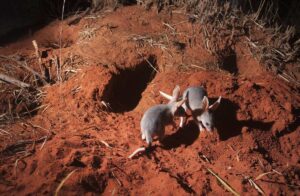Queensland – the country’s mosts coal dependent state – says it will lock in its multiple renewable energy targets – which rise to 80 per cent by 2035 – through legislation as part of a $62 billion investment plan over the next decade.
The state Labor government says it expects 22GW of new wind and solar, and another 12GW of batteries and pumped hydro, will be built by 2035, creating 100,000 jobs along the way.
The plan includes transforming the sites of the state’s coal generating facilities into clean energy hubs, the construction of two massive pumped hydro projects at Borumba and Burdekin, new transmission links such as the Copperstring line out to Mt Isa, and green hydrogen hubs at Gladstone and Townsville.
The legislation will include the creation of multiple renewable energy zones, a jobs security and guarantee fee, a Queensland Energy System Advisory Board, an Energy Industry Council, the Queensland Renewable Energy Jobs Advocate.
Queensland currently has the lowest renewable energy share of any state in Australia – at 22 per cent – and will not overtake other states despite the targets it plans to legislate – 50 per cent by 2030, 70 per cent by 2032, and 80 per cent by 2035.
South Australia is aiming for net 100 per cent renewables by 2030 and will likely reach that level well before then, Victoria is aiming for 95 per cent renewables by 2035, and NSW has no renewables target per se but has a roadmap that anticipates all its coal fired generators could close by the end of the decade.
Queensland also has a relatively weak emissions reduction target of just 30 per cent below 2005 levels by 2030, beneath the federal target of 43 per cent cut by 2030, and well below what the science says is required as part of efforts to cap global warming at 1.5°C.
Renewable Energy Zones, Queensland Energy System Advisory Board, Energy Industry Council, and the Queensland Renewable Energy Jobs Advocate.
“We are building the Queensland SuperGrid, Australia’s largest, which will provide the backbone to our new energy system to transport renewable energy across the state,” Premier Annastacia Palaszczuk said in a statement.
“Queensland also has some of the best wind and solar resources in the world which is why we are seeing so many renewable energy projects planned or underway.
“The legislation will also provide security for our energy workforce as the energy transition occurs, makes sure no worker is left behind, and legislates our commitment to public ownership.”
A $150 million Job Security Guarantee will support workers in publicly owned coal-fired power stations, for training, support, to ensure a sufficient number of workers are retained for the safe and reliable operation of coal- fired power stations, and to provide founding for the energy council and renewable jobs advocate.
The state expects 54 per cent of the new capacity to come from state companies, and 46 per cent from private investment. The state will own and fund all of the transmission and deep storage (pumped hydro) assets.
However, the new mandate for overall majority ownership of new capacity has raised concerns among renewable and storage investors, who are seeking meetings with the government to seek clarity over the meaning and intent of that part of the legislation.
See: Renewable investors seek clarity over Queensland’s new state ownership mandate
The state also plans to support local manufacturing. “We will need thousands of batteries, wind turbines, solar panels and kilometres of transmission lines – and we want that equipment built here in Queensland, so Queenslanders get the benefits,”deputy premier Ian Miles said.










